PA Master Naturalist’s Notebook: August 10, 2024
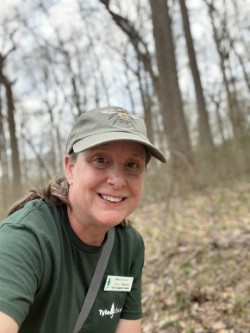
As the Program and Tour Coordinator at Tyler Arboretum, every week I look forward to preparing my weekly report for our volunteer educators.
I draw upon my training as a PA Master Naturalist to highlight the plants, insects, animals and other natural phenomena I’ve recently observed on Tyler’s grounds. I include photos (and some videos) along with educational tidbits our volunteers can share with our visitors.
My colleagues have encouraged me to compile my reports into an occasional blog for you. Here’s my account of an amazing mothing experience I had last weekend! I’d love to hear from you about your observations too! Please email me anytime at tmallon@tylerarboretum.org.
Report: August 10, 2024
Shortly before sunset on August 10, I met with a small group of moth enthusiasts at Tyler Arboretum. We set up light sheets at Lucille’s Garden and the Pollinator Preserve. Over the next 3.5 hours, we moved between these two locations to make observations. I was hopeful that we would see a diverse range of Lepidoptera (the order of insects that includes butterflies and moths). I’m pleased to report that we recorded more than 30 unique species of moths, including a rare northern sighting of the angel-winged emerald moth!
No insects were harmed during this endeavor. When we turned off the lights at the end of the evening, the moths began to disperse, and we gently shook the light sheets to encourage stragglers to leave. Then, we carefully checked the sheets before stowing them for future use. I had to coax a few persistent moths off of my arms and clothing.
I arrived home well after midnight, my head so full of wonder that I had trouble winding down and stayed awake until the wee hours. The experience was completely worth being a little tired the next day.
IDs were confirmed with the Peterson Field Guide to Moths of Northeastern North American and iNaturalist. Moth ID can be tricky, please let me know if you spot an incorrect ID!
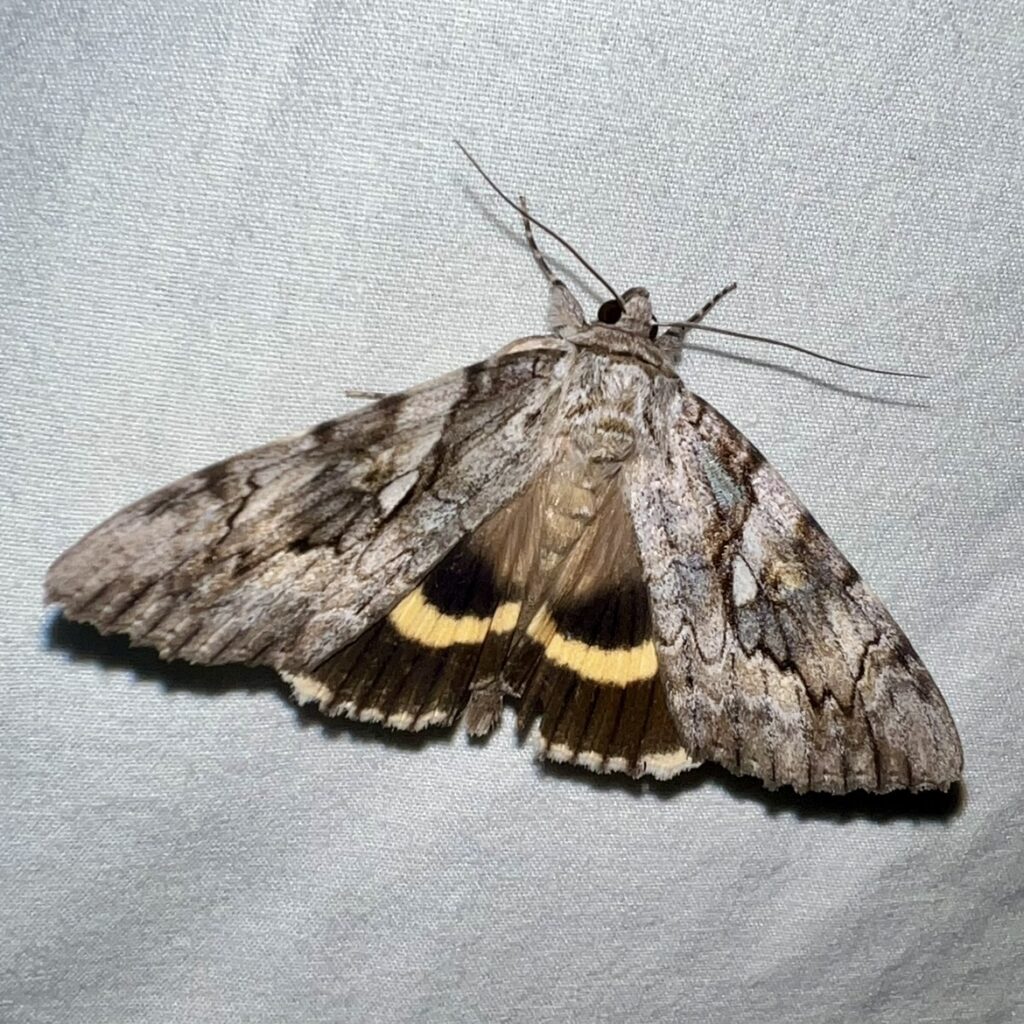
Yellow-banded underwing (Catocala cerogama)
Pictured with wings open and closed.
Larval host plant: American basswood.
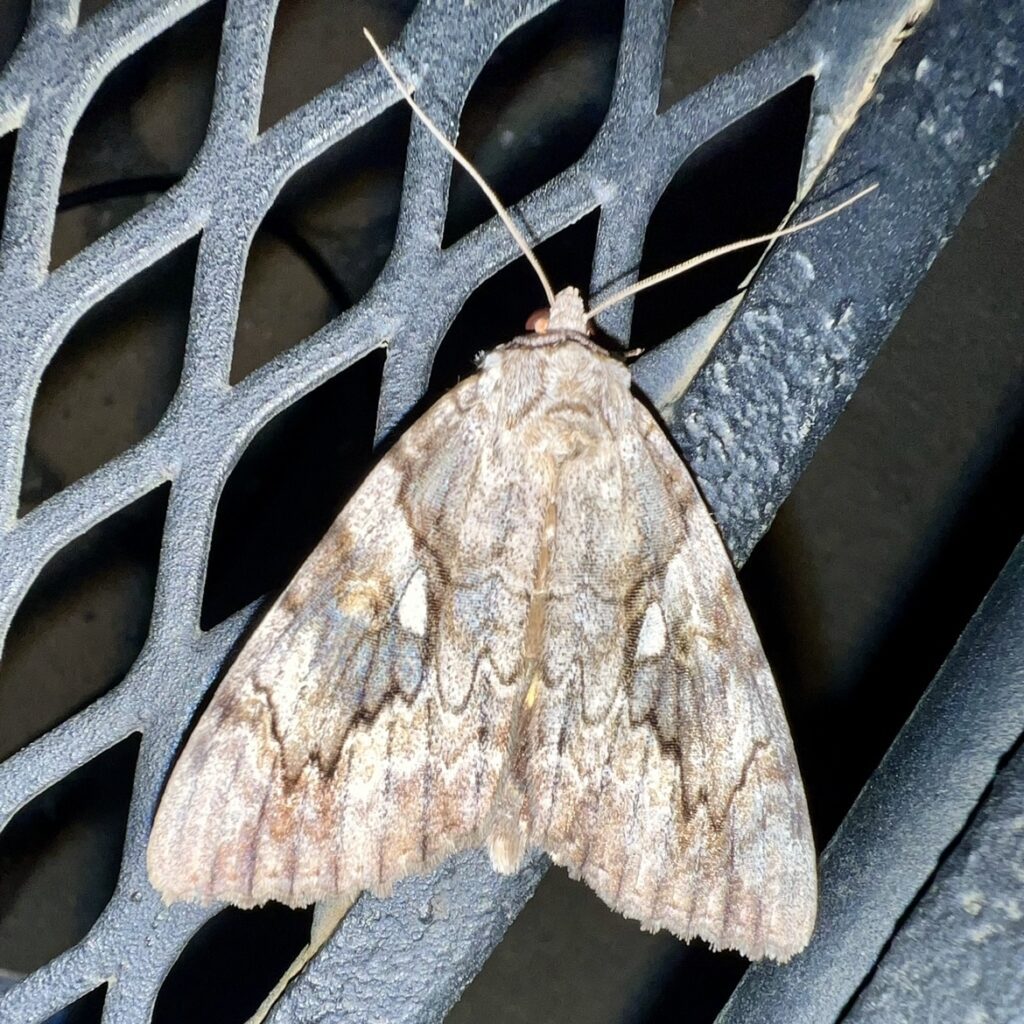
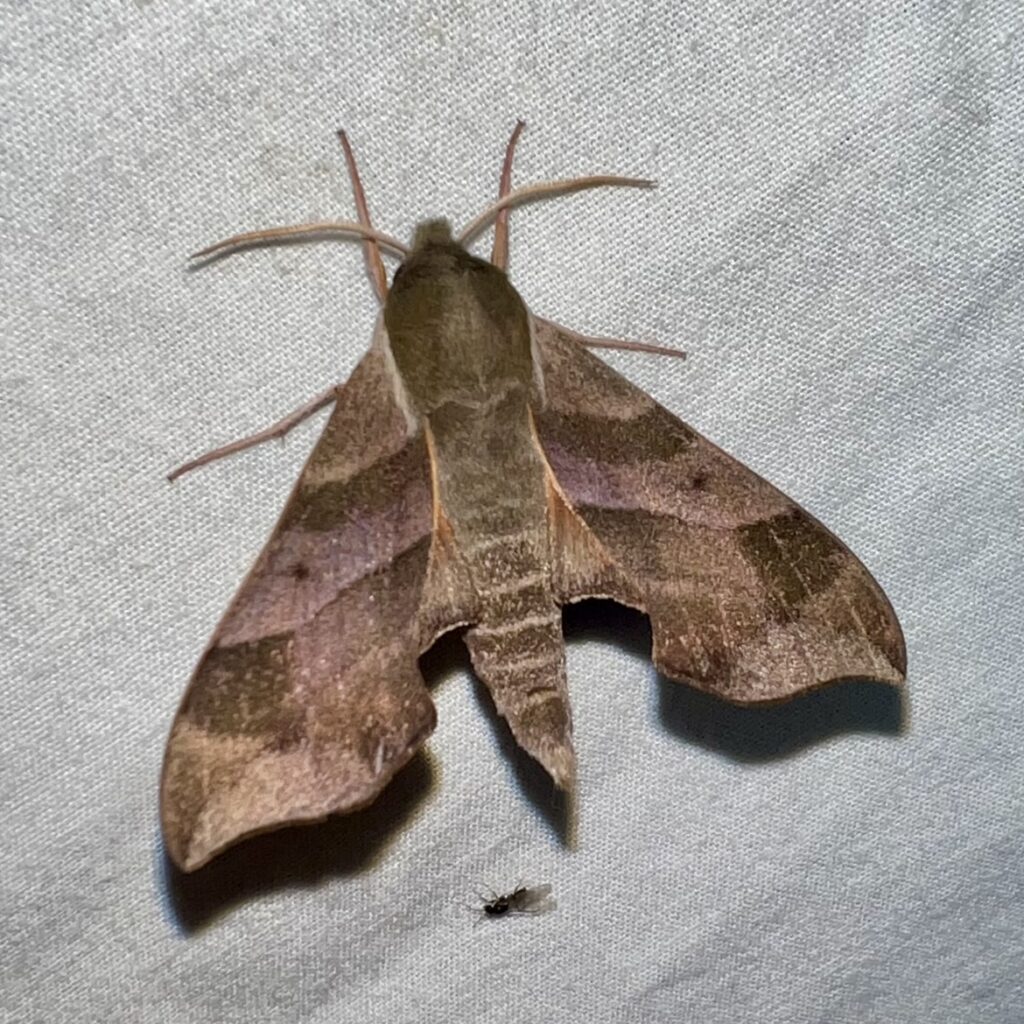
Virginia creeper sphinx (Darapsa myron)
Larval host plant: Virginia creeper; viburnums; grape vines.
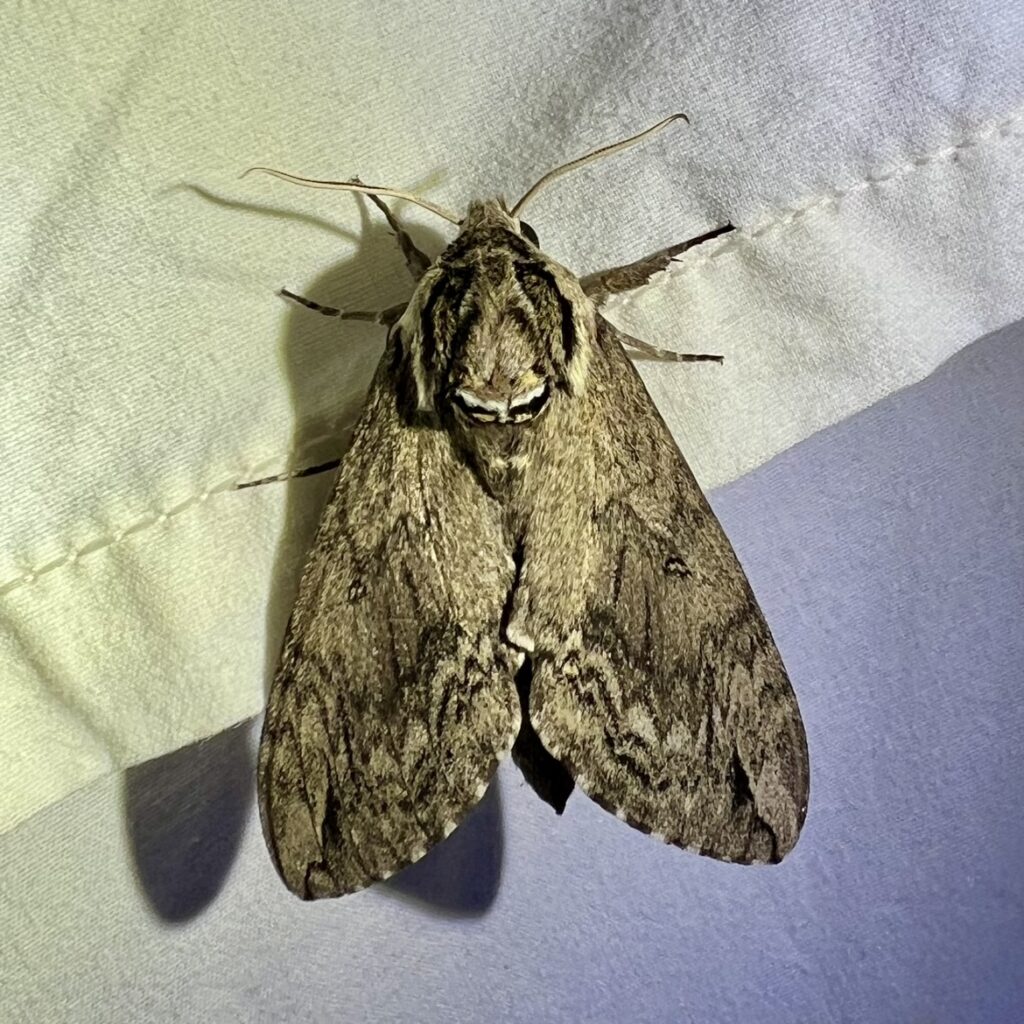
Catalpa sphinx (Ceratomia catalpae)
Catalpa sphinx caterpillars may completely defoliate a catalpa tree during a single summer. Surprisingly, this does not seem to effect the health of the tree.
Larval host plant: Catalpa leaves.
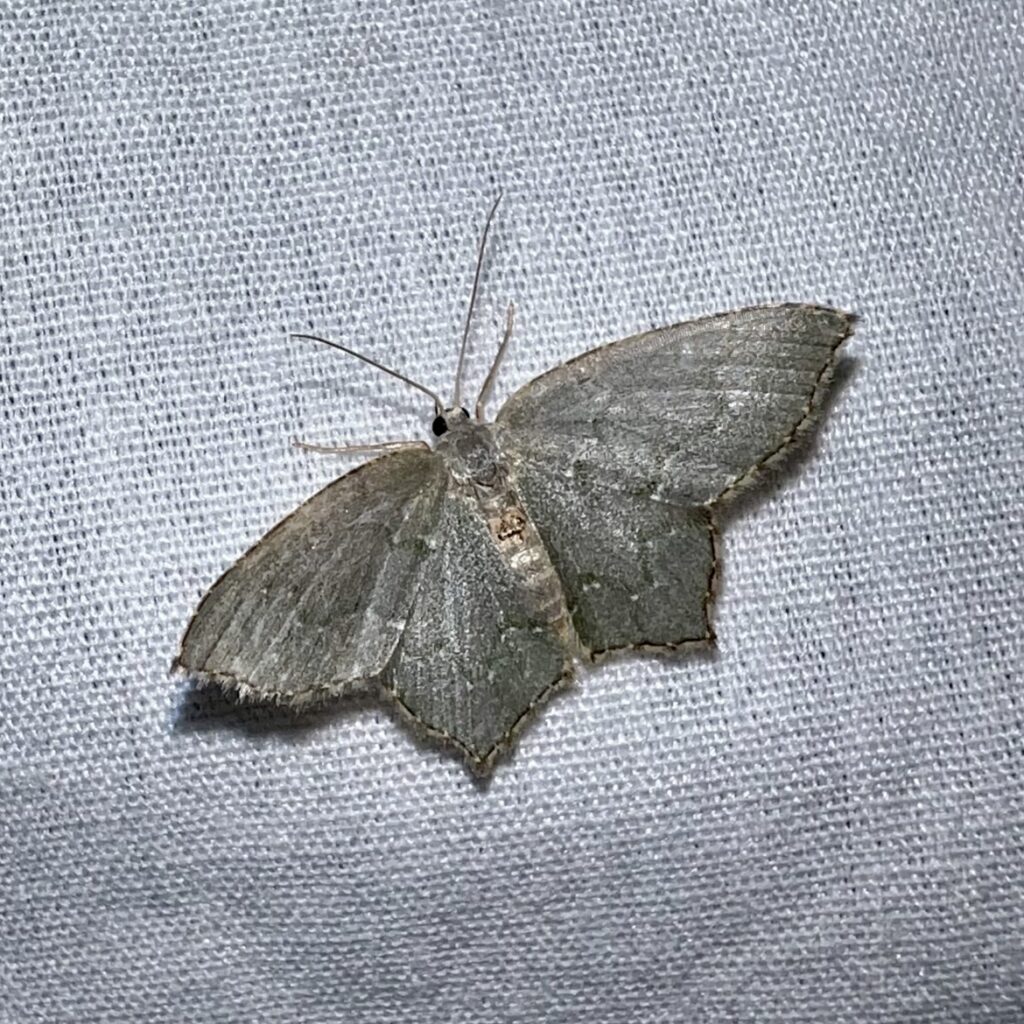
Angel-winged emerald moth (Chloropteryx tepperaria)
This is only the second iNaturalist observation of this moth in Pennsylvania, and the northernmost sighting in the state.
Larval host plant: Bald cypress.
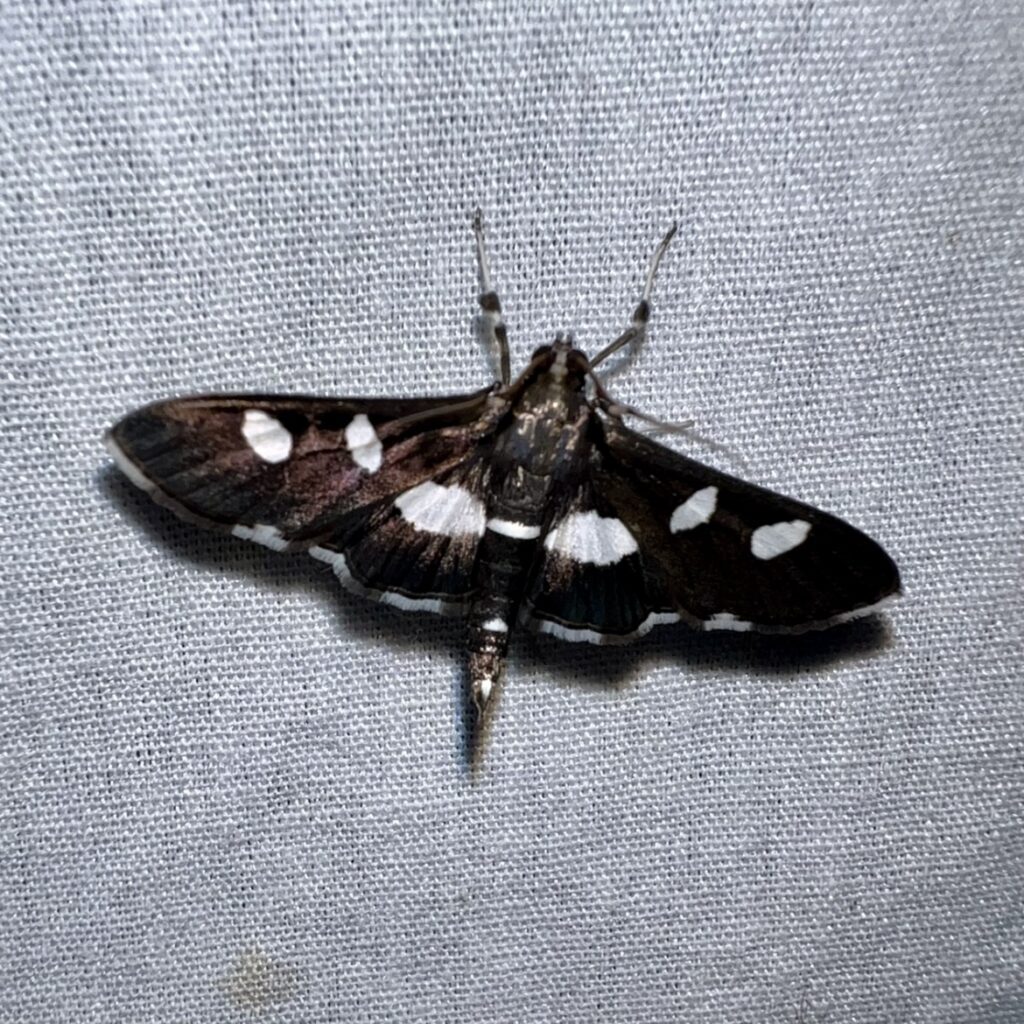
Genus Desmia, species unknown: Grape leaffolder (D. funeralis) or Grape leafroller (D. maculalis)
Proper ID requires examination of mouthparts or DNA.
Larval host plants: Wild and cultivated grapes; Redbud; Evening primrose; Virginia creeper.
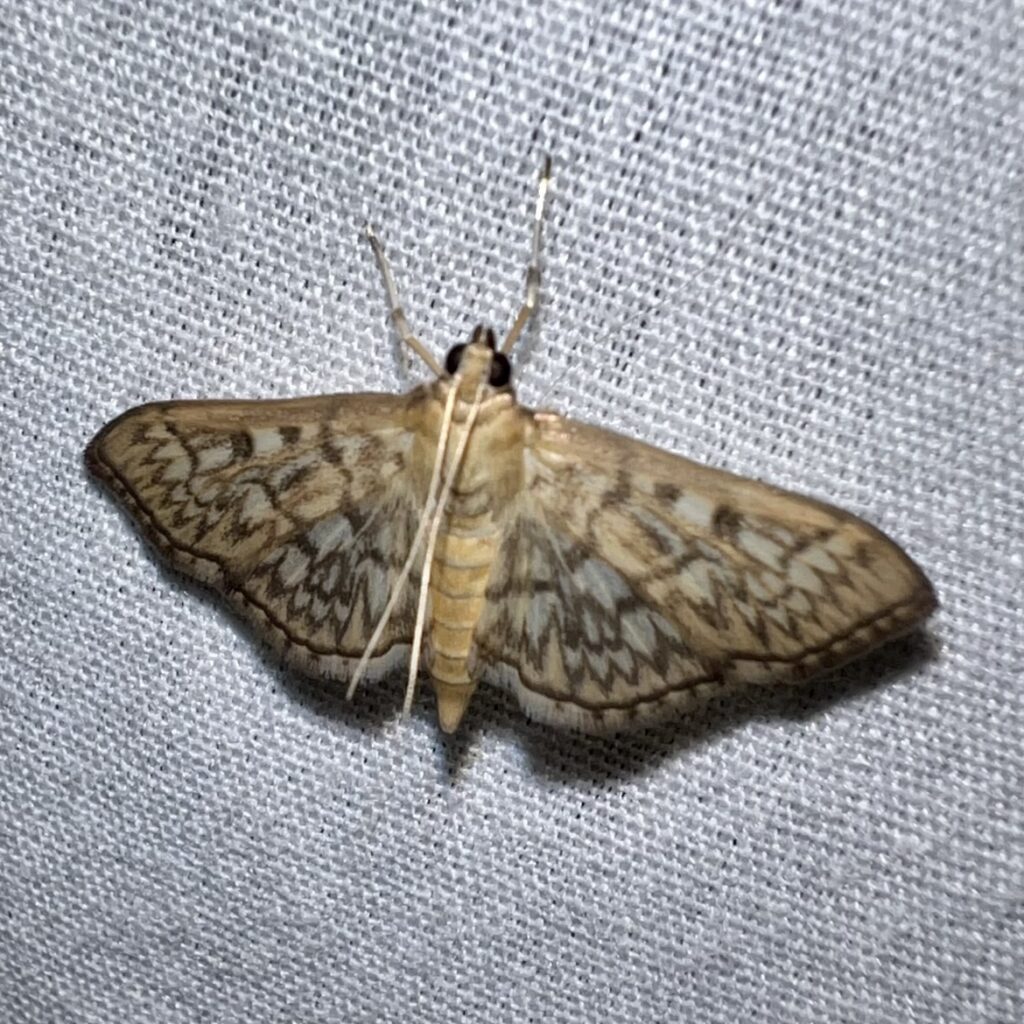
Zigzag herpetogramma (Herpetogramma thestealis)
Larval host plants: Basswood; Carolina silverbell; Spikenard.
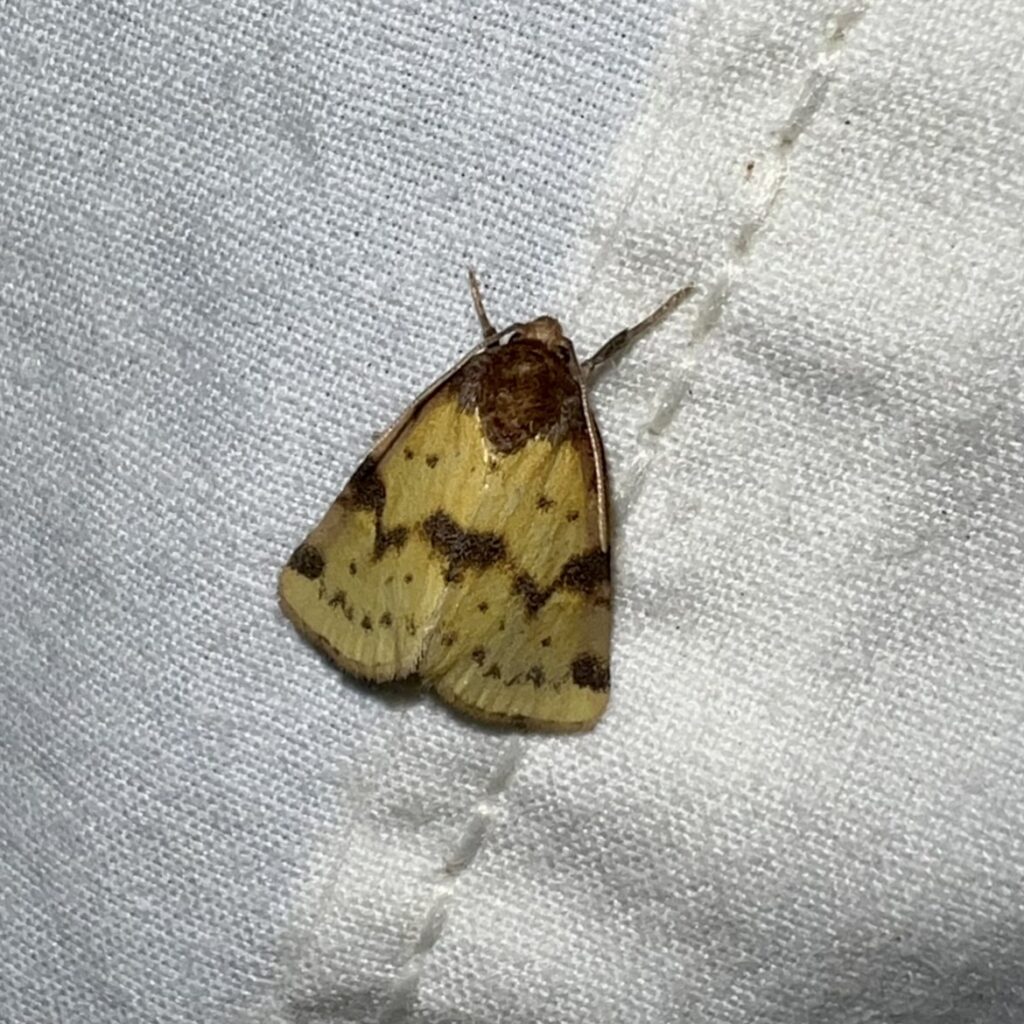
Obtuse yellow (Azenia obtuse)
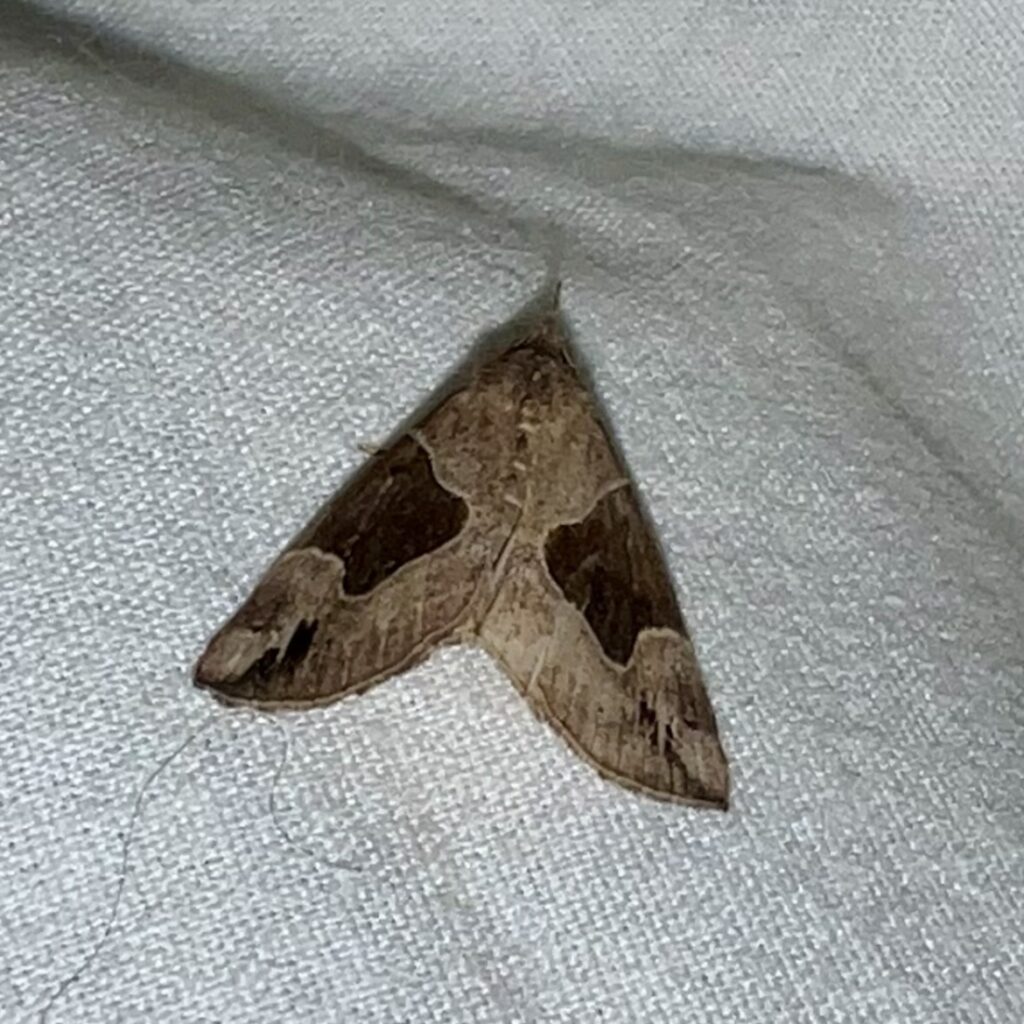
Flowing-line snout (Hypena manalis)
Larval host plant: false nettle.






